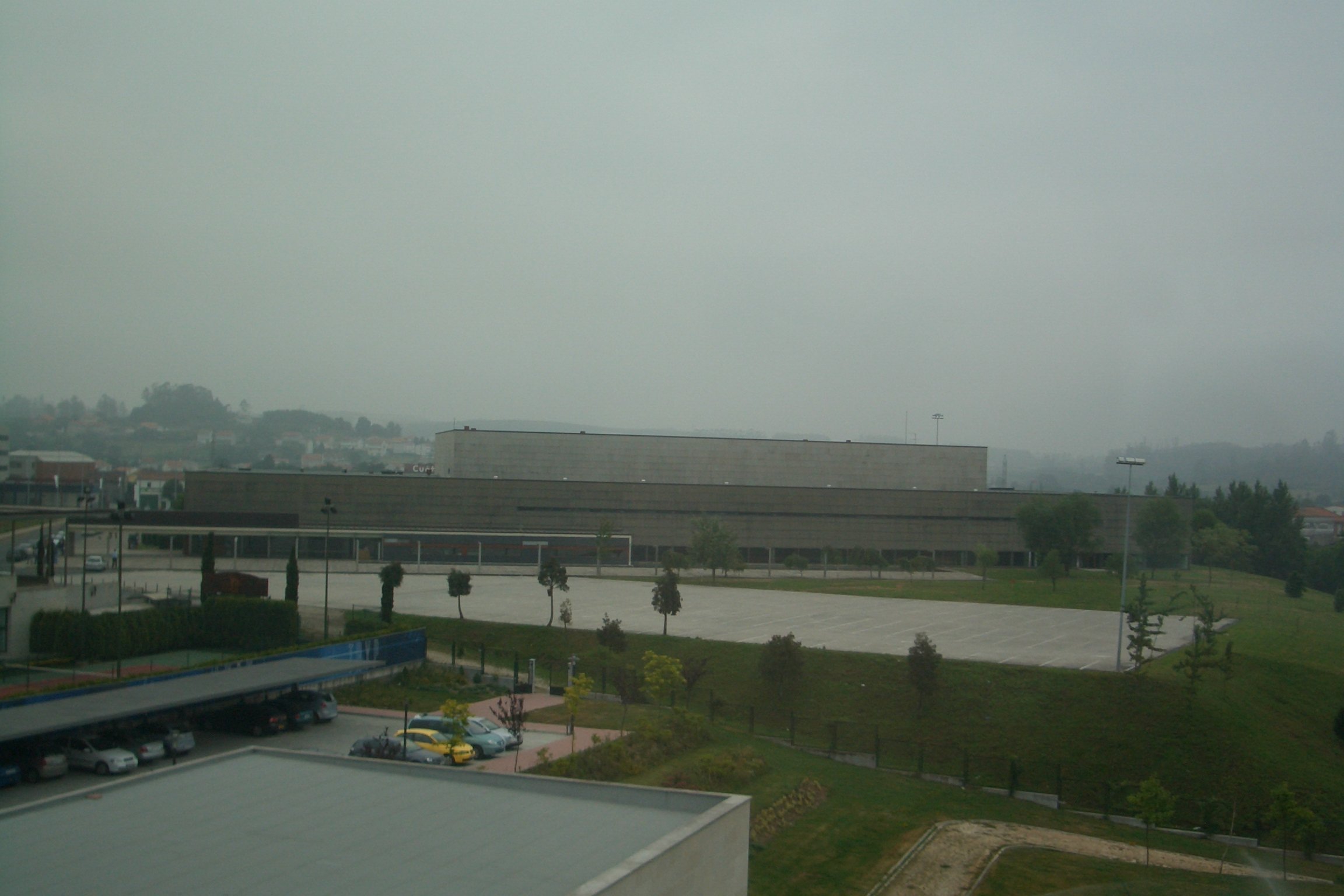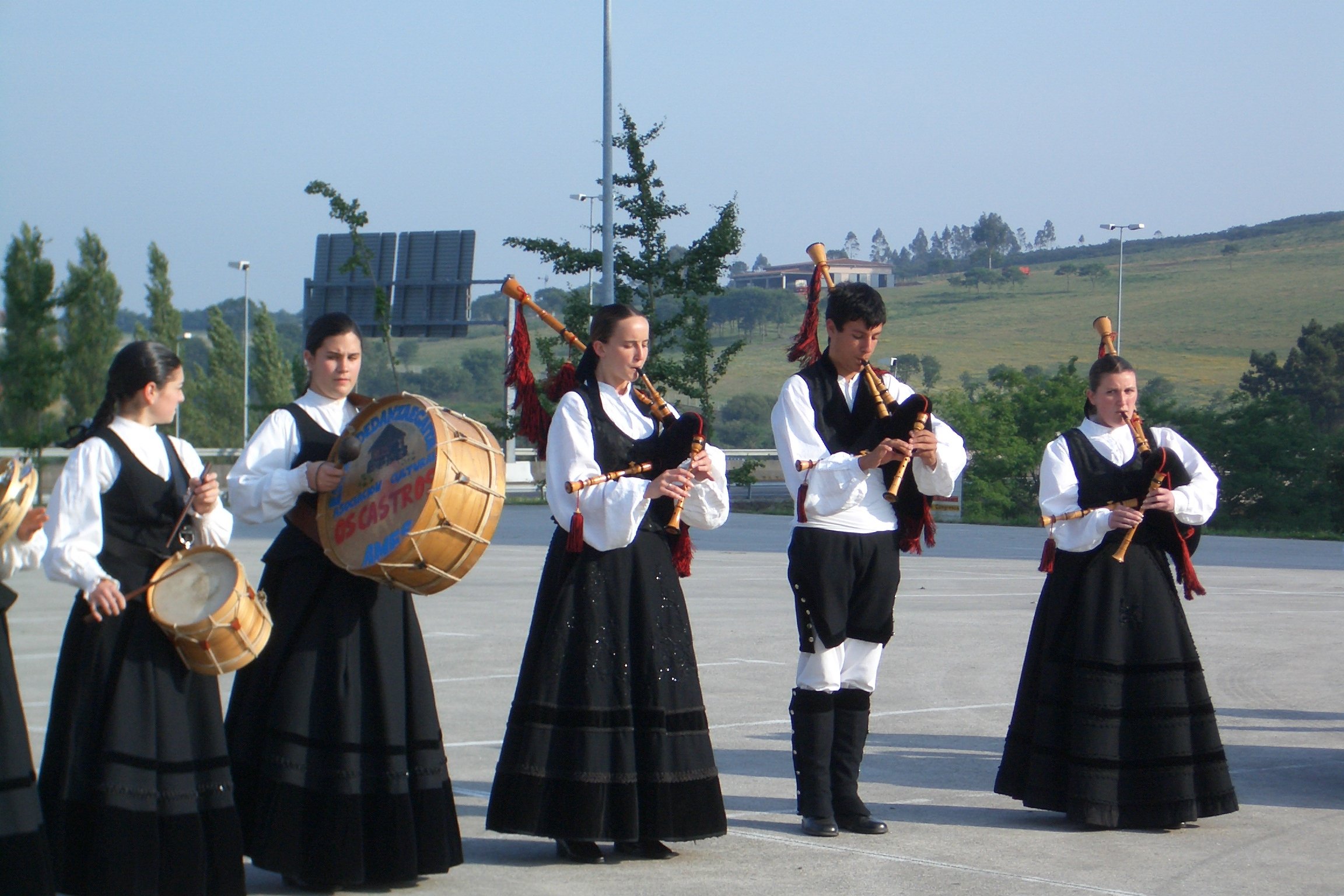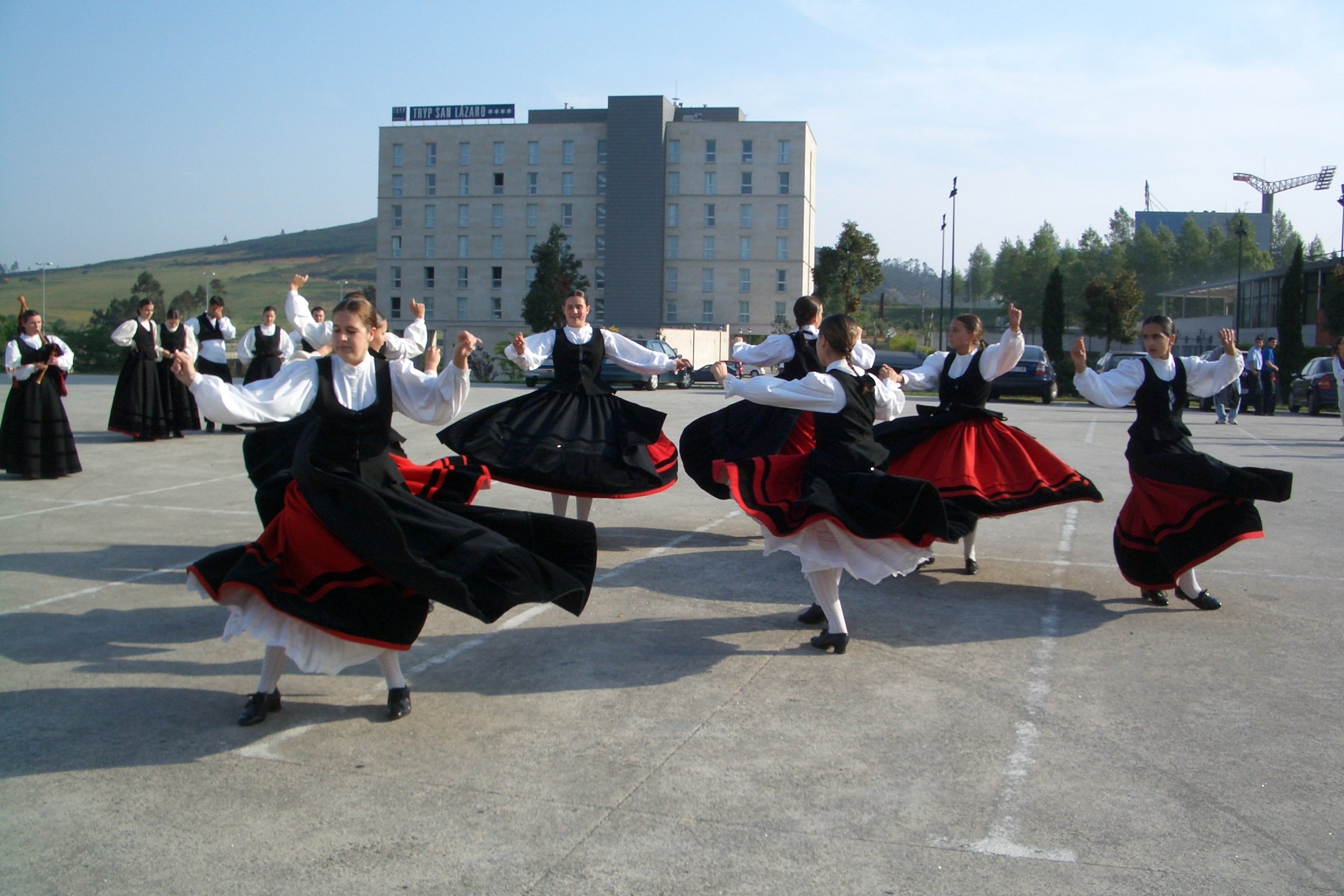ASLO
posted 5 July 2005
Written 24 June 2005
This year's meeting of the American Society for Limnology and Oceanography (ASLO) set a new attendance record—2000 registrants. I don't know whether that figure includes me; I was registered as an "accompanying person," entitled to coffee breaks, meals, parties, etc., but not to attend the talks. Im afraid I accidentally read parts of a couple of posters as I walked by, but I tried to keep that sort of thing to a minimum.
 Because all those scientists were arriving simultaneously, together with their accompanying persons, registered and unregistered, Santiago's taxi fleet was rather overwhelmed. (The place doesn't have that many taxis; after all, a large fraction of the 3 million annual visitors to the city doesn't use them; they arrive on foot from as far away as Riga—yes, Latvia—bypassing the airport as though it weren't there.) We waited in line, with a couple of hundred of our closest colleagues, for a little over 20 minutes while taxis shuttled back and forth to the conference hotels. When we finally got one, our taxi driver actually spoke quite good English, which turns out not to be anywhere near as common as I would have expected in such a major tourist destination. Our hotel, the Tryp San Lázaro, is conveniently located right next door to both the conference center (or, as it is listed, in full, in each and every one of the thousands of places it is mentioned in the program booklet, the "Palacio de Congresos y Exposiciones de Galicia") and to the soccer stadium, about an hour's walk from the center of town. This dim photo of the conference center was taken from our hotel window on a foggy morning. In contrast to the Tryp Washington, The Tryp San Lázaro is purpose-built, with nice, flat floors and elevators to all levels, so luggage presents less of a problem. Like the Tryp Washington, it has lots of nice storage shelves and drawers (sadly lacking in most French hotels, where you just have to pile your underwear on the floor or on your nightstand), good showers, and wonderful 3x5-foot bath towels.
Because all those scientists were arriving simultaneously, together with their accompanying persons, registered and unregistered, Santiago's taxi fleet was rather overwhelmed. (The place doesn't have that many taxis; after all, a large fraction of the 3 million annual visitors to the city doesn't use them; they arrive on foot from as far away as Riga—yes, Latvia—bypassing the airport as though it weren't there.) We waited in line, with a couple of hundred of our closest colleagues, for a little over 20 minutes while taxis shuttled back and forth to the conference hotels. When we finally got one, our taxi driver actually spoke quite good English, which turns out not to be anywhere near as common as I would have expected in such a major tourist destination. Our hotel, the Tryp San Lázaro, is conveniently located right next door to both the conference center (or, as it is listed, in full, in each and every one of the thousands of places it is mentioned in the program booklet, the "Palacio de Congresos y Exposiciones de Galicia") and to the soccer stadium, about an hour's walk from the center of town. This dim photo of the conference center was taken from our hotel window on a foggy morning. In contrast to the Tryp Washington, The Tryp San Lázaro is purpose-built, with nice, flat floors and elevators to all levels, so luggage presents less of a problem. Like the Tryp Washington, it has lots of nice storage shelves and drawers (sadly lacking in most French hotels, where you just have to pile your underwear on the floor or on your nightstand), good showers, and wonderful 3x5-foot bath towels.
The meeting was beautifully organized, and the conference center runs like clockwork. I don't usually get to watch all the setup and breakdown for the coffee breaks, cocktail receptions, and whatnot, but on Monday, I pulled a chair up to a convenient electrical outlet that happened to have a great view of the vast lobby area. While I worked, I saw platoons of waitstaff provision the break area three times. The lobby was actually in two parts, one at each end of the building, connected by broad hallways along the two sides of the building. One lobby half was divided among registration areas, commerical exhibits (Unisense, Oxford University Press, various high-tech equipment vendors, the University of Santiago, etc.), and poster space. Half of the other held more poster space, and the rest, plus one of the broad hallways, was break and reception space. So registration, commercial exhibits, 200 posters, and a reception for 2000 could all take place simultaneously! For each coffee break, they customarily set up 36 round tables (each big enough to seat 10-12 for banquets), with white tablecloths. Around the edge of each, they laid out a row of coffee cups, inverted on their saucers, each with a spoon and a sugar packet, perhaps 50-60 per table. In the center, they placed plates heaped with various sorts of excellent shortbread cookies, each in its own little cellophane wrapper; a plate full of instant decaf packets, tea bags, artificial sweetener, and more sugar packets; smaller plates with cocktail napkins; and 20-30 1/3-litre bottles of water, arranged in neat triangles of 10. At the appointed hour, a small army of waiters and waitresses appeared, each bearing a large stainless teakettle of hot coffee in one hand and a pitcher of hot milk in the other. The circulated among the crowd, serving anyone who held out a cup, blending coffee and milk as directed. (They seemed to follow a zone strategy, each assigned to a couple of tables.) A few others circulated with kettles of hot water for the tea and decaf drinkers (though I thought the best combination was instant decaf made with hot milk instead of water). Altogether, much, much more efficient than the usual system, where there's invariably a bottleneck at the coffee urn surrounded by congestion as people assemble sugar, cream, stirrers, etc.
When the break was over, a fleet of tea carts arrived with bins for all the empty cups (which were cleverly designed to stack securely), other debris, and linens. If the next even called for the rectangular tables, the rounds ones were upended, their legs folded, and they were rolled away on edge to their storage room. (Cleverly, when the rectangular tables had to be cleared away, rather than making 2-4 people lift and carry them, the servers just lifted each one, cups, plates, trash, and all, onto a tea cart, to be rolled swiftly away to the staging area behind the coffee shop, where it could be cleared and folded at leisure. I was reminded of the "Like a Virgin" scene from Moulin Rouge, with all the tea carts zooming around, their linens flying in the breeze. )
Each evening, the final talks of the day (ending at 7:30 p.m.) were followed by a cocktail reception. This time, each table was laid with a dozen glasses; 3-4 open bottles of wine, red and white; and about 20 little gilded paper trays of savory snacks, technically tapas, I think. The usual assortment was thinly sliced raw ham with small bread sticks, wedges of manchego cheese with saltines, square crustless white-bread sandwiches of cooked ham, the same of buttery yellow cheese, open-faced sandwiches of salami (my favorite), the same of chorizo, and small pastry turnovers of minced ham. Servers would circulate with trays of white wine, red wine, beer, and water in wine glasses and with several colors of fruit punch in tall tumbers. If you were drinking red or white wine, you could pour your own refill from the open bottles. Otherwise, you emptied your glass, left it on a table, and looked for a waiter with another. Waiters who emptied their trays loaded them with empty glasses for the return trip to the kitchen. The little paper trays were replaced as soon as they were emptied, and amazingly, at no time did the food run out or even get seriously picked over, even during the two-hour opening reception (and even though small groups of smokers tended to stack up three or four trays and take them, together with a couple of bottles, outside to the terrace, where smoking was allowed). At special receptions —opening night, Thursday evening (the last evening reception), Friday lunch—extra food was added to the basic assortment. On opening night, we got fat little miniature hamburgers (rare!) with mustard. On Thursday, we got sizzling earthenware dishes of shrimp and buttery-tender stewed garlic. On Friday, the usual 2- to 3-hour lunch break was replaced with an extra half-hour coffee break with tapas—empanadas (not turnovers, but sort of filled, double-crusted pizzas cut into squares) filled with salt cod and peppers, deep-fried shrimp croquettes, and sandwiches of raw ham on crusty rolls.
 Also on Thursday night, a troop of Galician pipers, drummers, and dancers performed outside the conference center during the reception. You can see our hotel is the background, behind the dancers.
Also on Thursday night, a troop of Galician pipers, drummers, and dancers performed outside the conference center during the reception. You can see our hotel is the background, behind the dancers.
 Written 25 June 2005
Written 25 June 2005
The setup also included a speaker ready room (where I worked most of the time), containing three computers with internet access, a projector and screen, and lots of tables and chairs for people who brought their own laptops, and an e-mail room with eight or ten computers you could stand in line to use. Wi-fi was available for 20 euros a day (i.e. 24 hours)—you paid the cashier in the conference-center office, then took the receipt to the nice young man in the wi-fi office, who gave you access. He finally diagnosed the repeated problems I've had with wireless—the antenna on my internal wi-fi card is either inadequate or improperly installed, so I never get anything but an extremely weak signal even sitting next to the transmitter. He lent me an external wi-fi card to plug into a USB port, and that worked fine.
This was the first meeting we'd been to where speakers were required to submit their PowerPoint presentations in advance, at least 24 hours before the talk but preferably before leaving home for the meeting. Next to the speaker ready room was the "presentation room," where a dozen operators sat at computer screens supervising the presentations in the various meeting rooms. You could present yourself there to make changes to your slides up to 24 hours before your talk, and from the computers in the ready room, you could run through your slides, projected or on the computer screen, to verify their appearance and/or practice your talk. Very slick. I didn't hear a single horror story about presentations that wouldn't load, slides that projected wrong, people showing up with their presentations on media that couldn't be accepted, etc. The one near disaster was that the Spanish printer hired to print and deliver the program booklets and abstract booklets (about 3/4 inch of paper for each of 2000 participants) went bankrupt or something and backed out of the job two days before the meeting. The programs had to be rush printed in the U.S. and air-expressed overnight to Santiago!
All in all, I was pretty impressed with how the whole thing was run.
previous entry List of Entries next entry
 Because all those scientists were arriving simultaneously, together with their accompanying persons, registered and unregistered, Santiago's taxi fleet was rather overwhelmed. (The place doesn't have that many taxis; after all, a large fraction of the 3 million annual visitors to the city doesn't use them; they arrive on foot from as far away as Riga—yes, Latvia—bypassing the airport as though it weren't there.) We waited in line, with a couple of hundred of our closest colleagues, for a little over 20 minutes while taxis shuttled back and forth to the conference hotels. When we finally got one, our taxi driver actually spoke quite good English, which turns out not to be anywhere near as common as I would have expected in such a major tourist destination. Our hotel, the Tryp San Lázaro, is conveniently located right next door to both the conference center (or, as it is listed, in full, in each and every one of the thousands of places it is mentioned in the program booklet, the "Palacio de Congresos y Exposiciones de Galicia") and to the soccer stadium, about an hour's walk from the center of town. This dim photo of the conference center was taken from our hotel window on a foggy morning. In contrast to the Tryp Washington, The Tryp San Lázaro is purpose-built, with nice, flat floors and elevators to all levels, so luggage presents less of a problem. Like the Tryp Washington, it has lots of nice storage shelves and drawers (sadly lacking in most French hotels, where you just have to pile your underwear on the floor or on your nightstand), good showers, and wonderful 3x5-foot bath towels.
Because all those scientists were arriving simultaneously, together with their accompanying persons, registered and unregistered, Santiago's taxi fleet was rather overwhelmed. (The place doesn't have that many taxis; after all, a large fraction of the 3 million annual visitors to the city doesn't use them; they arrive on foot from as far away as Riga—yes, Latvia—bypassing the airport as though it weren't there.) We waited in line, with a couple of hundred of our closest colleagues, for a little over 20 minutes while taxis shuttled back and forth to the conference hotels. When we finally got one, our taxi driver actually spoke quite good English, which turns out not to be anywhere near as common as I would have expected in such a major tourist destination. Our hotel, the Tryp San Lázaro, is conveniently located right next door to both the conference center (or, as it is listed, in full, in each and every one of the thousands of places it is mentioned in the program booklet, the "Palacio de Congresos y Exposiciones de Galicia") and to the soccer stadium, about an hour's walk from the center of town. This dim photo of the conference center was taken from our hotel window on a foggy morning. In contrast to the Tryp Washington, The Tryp San Lázaro is purpose-built, with nice, flat floors and elevators to all levels, so luggage presents less of a problem. Like the Tryp Washington, it has lots of nice storage shelves and drawers (sadly lacking in most French hotels, where you just have to pile your underwear on the floor or on your nightstand), good showers, and wonderful 3x5-foot bath towels. Also on Thursday night, a troop of Galician pipers, drummers, and dancers performed outside the conference center during the reception. You can see our hotel is the background, behind the dancers.
Also on Thursday night, a troop of Galician pipers, drummers, and dancers performed outside the conference center during the reception. You can see our hotel is the background, behind the dancers.  Written 25 June 2005
Written 25 June 2005